Sockodyne Innovations and Transport Services
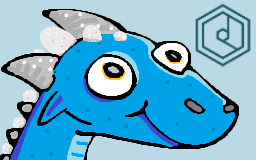

Sea, Air, and Space on the Wings and Whimsy of Dragons
ⓘ This is a largely in-universe article, detailing the agency I've been playing as since 2016 in my main KSP campaign. Think of it like a presskit.
It started out as a google doc, intended for doing viewer payloads on my Kerbal streams!
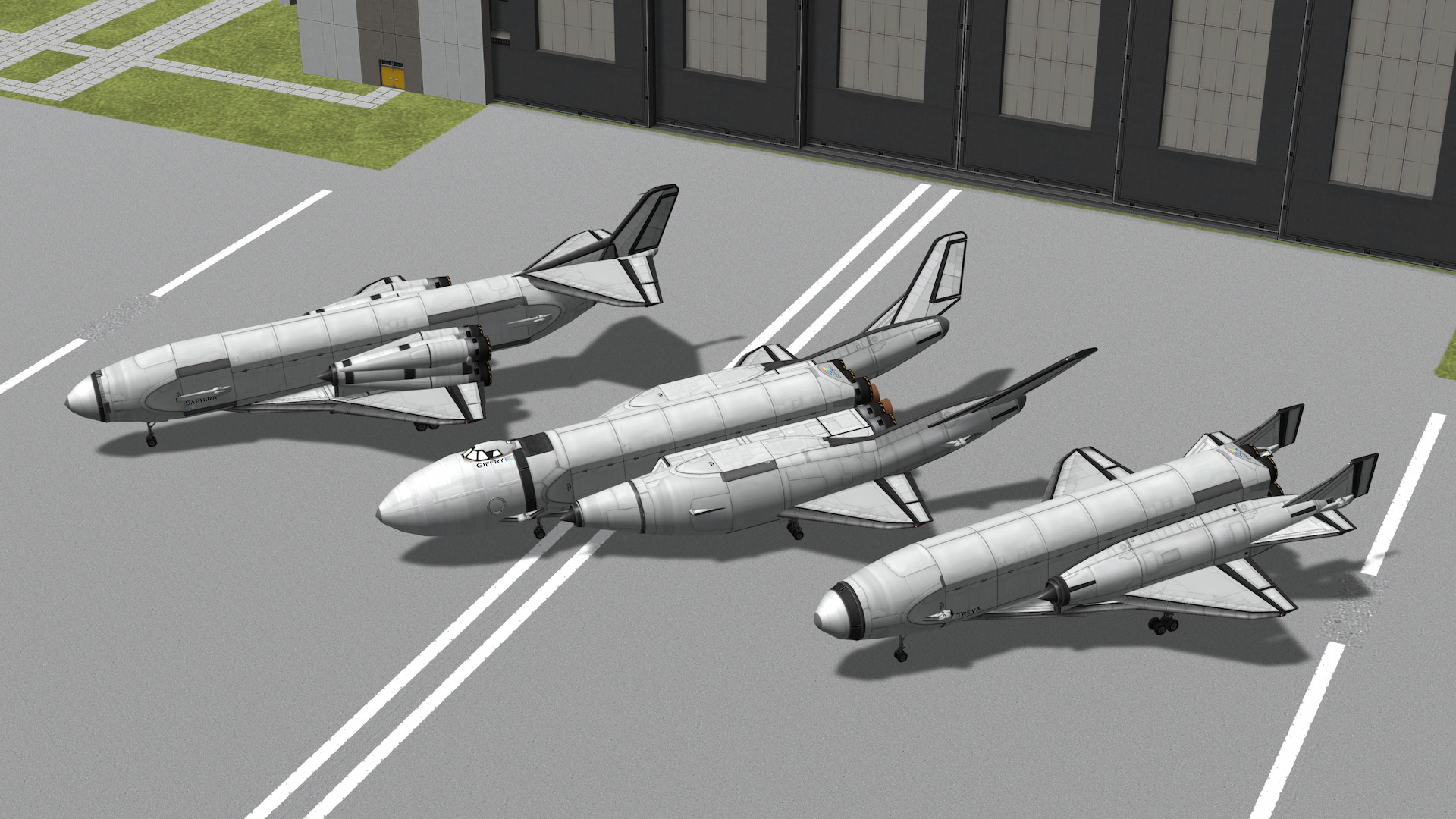
Agency Overview
Sockodyne Innovations and Transport Services is a R&D firm, air/spacecraft manufacturer, launch provider and airline, working to develop and deliver things throughout the Kerbin-Mun-Minmus system, with forays beyond through the Interplanetary Nuclear Transport programme.
Our portfolio consists of assorted airliners, spaceplanes, and so on; the board of directors has mandated that the space program be as reusable as possible, going so far as to forbid the use of traditional capsules and service modules in favour of airplane-based designs. We search the Human Space Program's discard bin of Shuttle concepts to find viable designs for our own use, including flyback boosters, two-stage spaceplanes, SSTOs, and more, using our aircraft design knowledge to great benefit to bring these designs to life as lifters and crew vehicles. With the recent introduction of commercial payload services, the marketing team would like us to inform you that If It Fits, Fly SITS!*
* I retconned the name once I thought of this pun. It used to be Delivery Service.
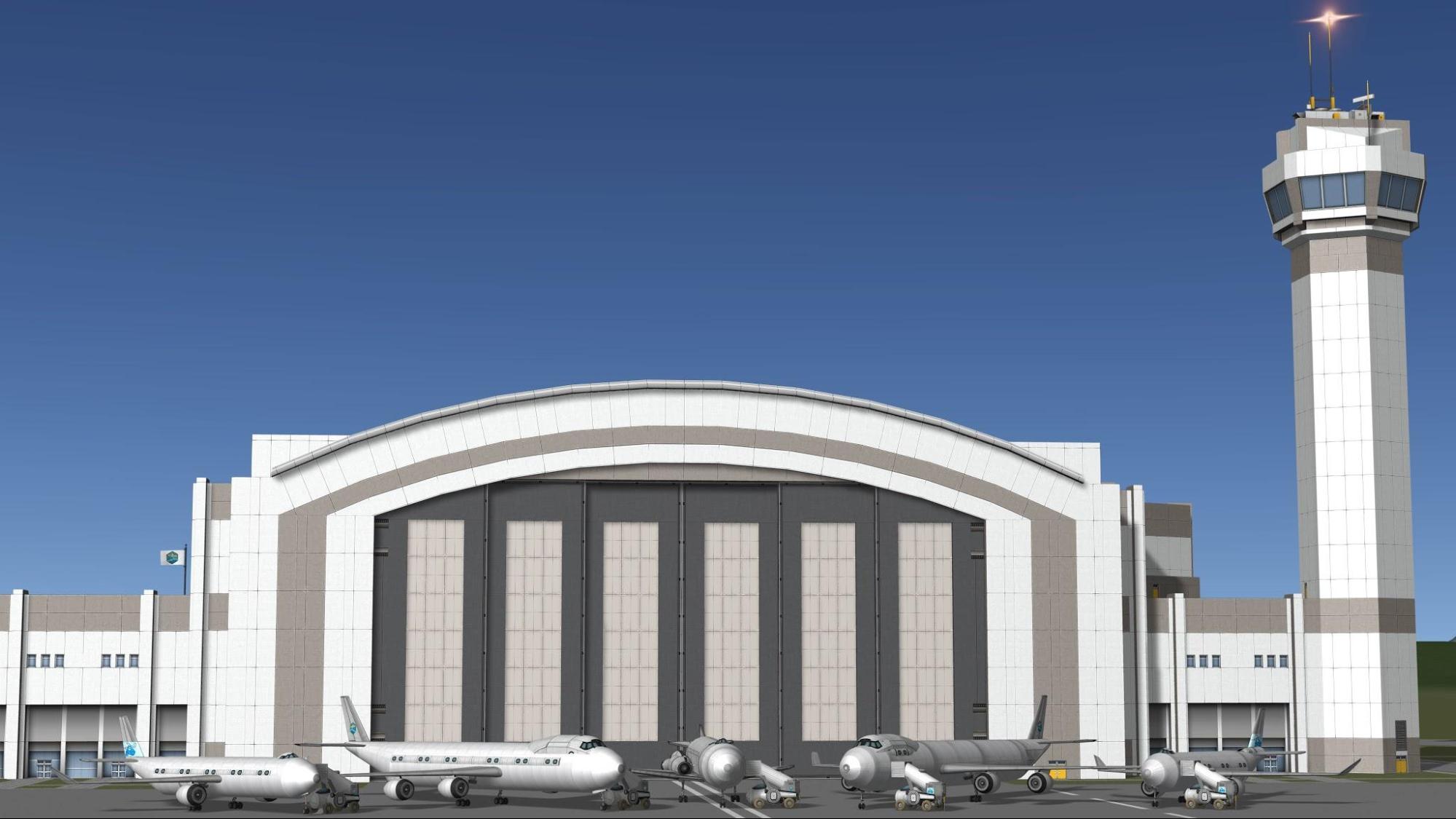
Our Vehicles
Whether it's a business jet to shuttle one to their next meeting, or a lifter capable of sending their payload into orbit and beyond, Sockodyne Innovation's Vehicle Design Wing has no shortage of designs to satisfy customer needs!
Space Launch- Spaceplanes (Multi-Stage to Orbit)
- Firnen (TSTO, VTHL)
- Ruth (TSTO, VTHL)
- Oromis+Glaedr (1.5STO, HTHL)
- Spaceplanes (Single-Stage to Orbit)
- Conventional Rockets
- Orbital
- Cismunar and Beyond
Space Launch Vehicles
Spaceplanes (Multi-Stage to Orbit)
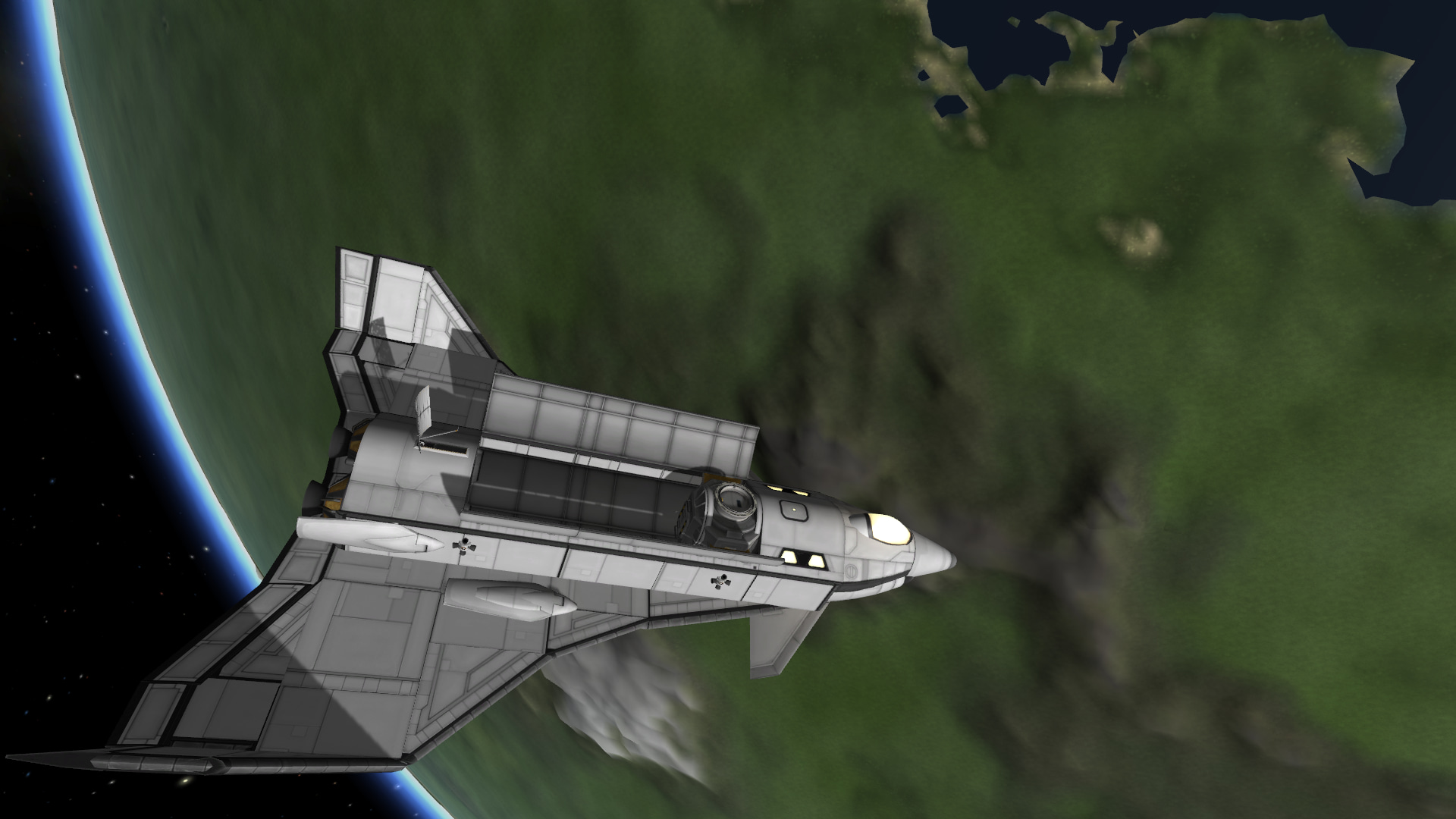
Firnen
Sockodyne's first foray into payload delivery, Firnen may not have the most spacious payload bay, but it made up for that with the beginnings of recoverability. Capable of delivering satellites at least two at a time, and even some smaller interplanetary probes, she held a max crew of five, and could conceivably be used solely as a crewed vehicle with the payload bay repurposed to hold fuel and supplies for extended missions. A two-stage-to-orbit spaceplane, its design aimed for trans-oceanic landings and recovery.
It is based on the "Spacemaster" concept from Martin Marietta circa 1969, and named for Arya's dragon in the book Inheritance. Retired after fifteen flights.
| Cost Per Mission | K$132000 |
|---|---|
| Max. Payload Size | Has to fit into a CRG-12 (CRG-04+CRG-08) cargo bay. |
| Max. Upmass | 5 tons. |
| Max. Crew | 4 (1 pilot and up to 3 passengers) |
| Status | RETIRED (Active 2016) |
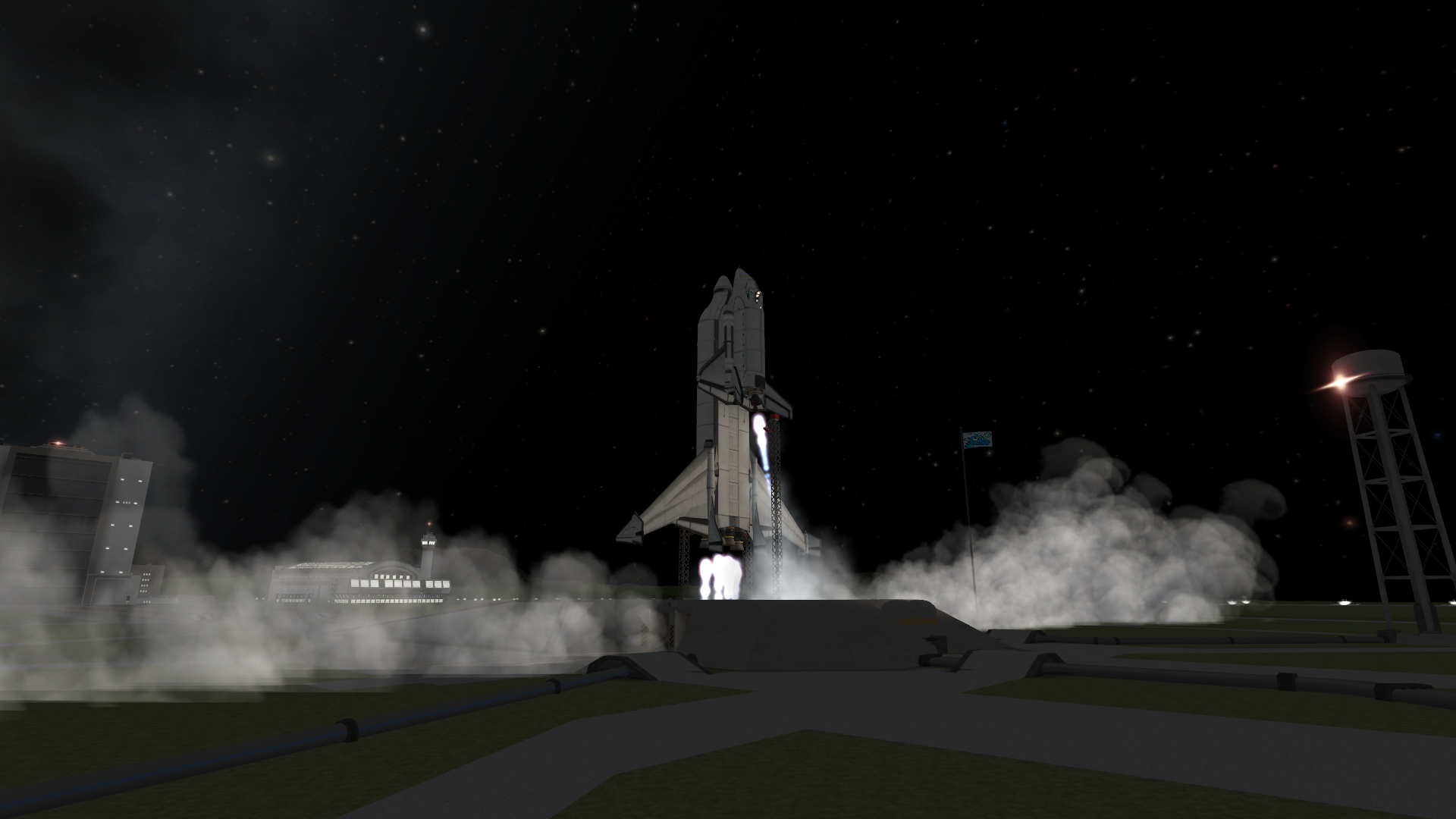
Ruth
Designed for medium payloads and crewed missions, Ruth offered a more spacious payload bay than Firnen, built-in docking capabilities, a proper service airlock, advanced avionics, and an increased crew capacity from 5 to 6. Perfect for station building/maintaining and large satellites, Ruth was also designed with a fully recoverable booster, minimising launch costs in the same way as Firnen, varying that lifter's design by mounting the orbiter to the top of the booster, rather than nestling it within. Sporting a payload bay in excess of a CRG-50, she could carry much larger payloads to a slightly higher orbit than Firnen.
The design was based on the Phase B Shuttle proposal from McDonnell-Douglas and Martin Marietta, and named for the white dragon in Anne McCaffrey's Dragonriders of Pern series. Retired after twenty-five missions.
| Cost Per Mission | K$67000 |
|---|---|
| Max. Payload Size | Has to fit in a CRG-50 cargo bay +- 1-2 meters length. |
| Max. Upmass | 10 tons |
| Max. Crew | 6 (2 pilots (CDR, Copilot) and up to 4 additional crew.) |
| Status | RETIRED (Active 2016-2017) |
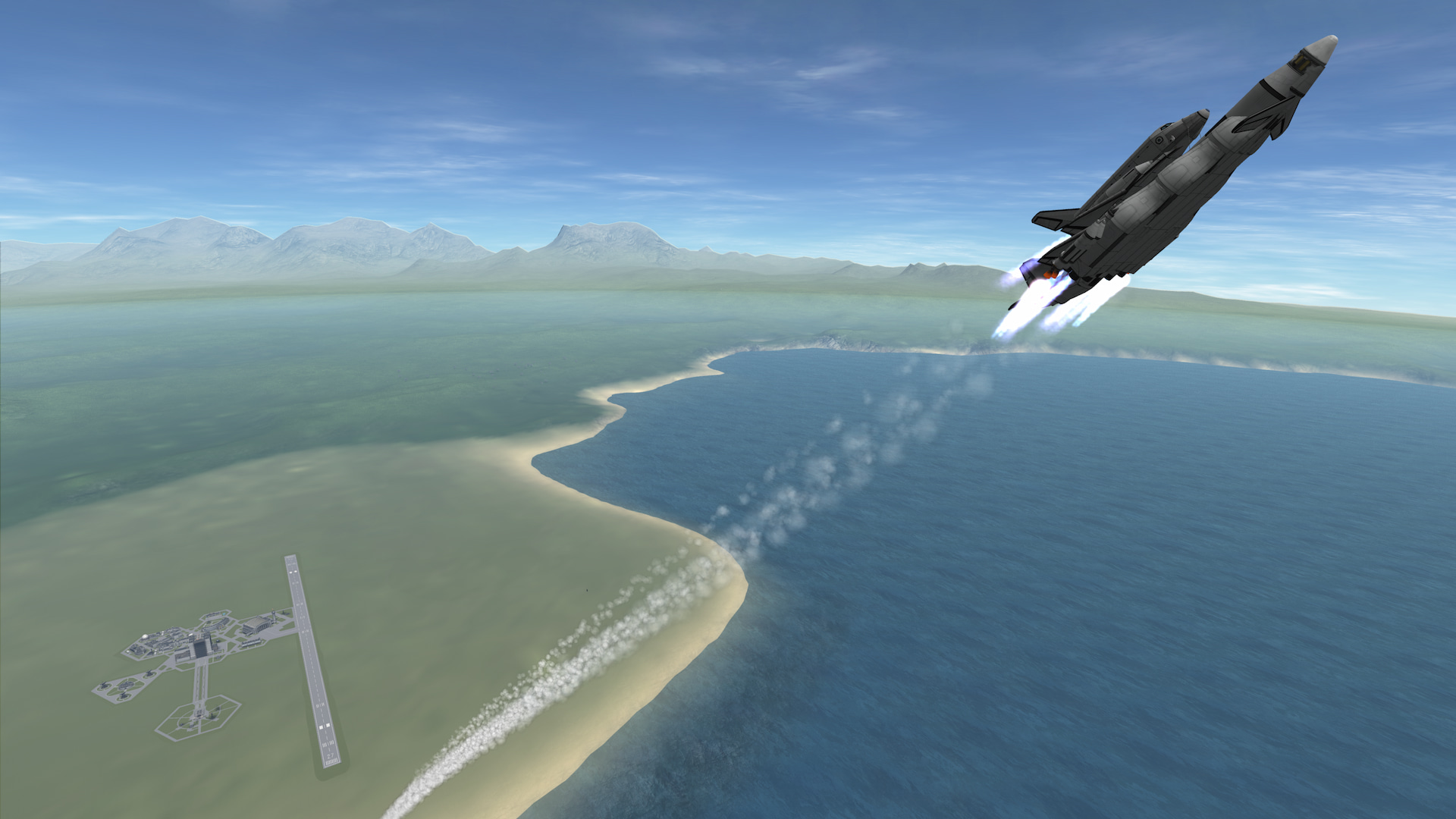
Glaedr & Oromis
Ruth provided a fairly adequate launch vehicle/orbiter combination, though as a system it was fairly nonflexible. Sockodyne engineers set out to create an orbiter to complement Ruth, and a single-stage-to-orbit lifter that could function on its own without the orbiter attached. When the orbiter (Oromis) was attached, as it can weigh up to 70 tons, it had ascent engines built in to help pull its weight. Otherwise, for similarly massive/oddly shaped payloads that are too unusual even for Dyno III, Glaedr as an SSTO would mount those payloads on its back, deliver them to orbit, and return unladen to a runway landing. They took their names from the gold dragon and his elven rider in Brisingr, the third book in the Inheritance series, and were based loosely on assorted Shuttle design proposals.
| Cost Per Mission | K$55000 |
|---|---|
| Max. Upmass | Glaedr: 60 tons Glaedr + Oromis: 20 tons |
| Max. Payload Size | i>Glaedr: Undefined i>Glaedr + Oromis: Just shy of a CRG-75 cargo bay |
| Max. Crew | (Orbiter) 8. 2 pilots (CDR, CPL) and up to 6 crew. |
| Status | RETIRED (2017-2018) |
Space Launch Vehicles
Spaceplanes (Single-Stage to Orbit)
Saphira
Saphira marked a paradigm shift in Sockodyne's space program, and a potent first step into the world of single-stage-to-orbit spaceplanes. The first of her kind, Saphira was an unmanned cargo vehicle powered by eight RAPIER engines and two Aerospikes, later switched out for Terriers during a refit. With a payload capacity of up to 36 tons, it matched and even exceeded Glaedr's capacity for a fraction of the cost per launch. Glaedr and Oromis saw an early retirement as Saphira and her siblings came online.
| Cost Per Mission | K$8500 |
|---|---|
| Max. Payload Size | 80% of a CRG-100 bay. |
| Max. Upmass | 36 tons |
| Status | RETIRED (2018-2021) |
Larieth
Saphira's success had already put Glaedr and Oromis on the path to retirement, though doing so would have left Sockodyne without the ability to carry crew and passengers to orbit, short of using a Dyno rocket with the dated Saur. This was exacerbated when the loss of Glaedr led to the program's unexpected conclusion.
Fortunately, a replacement was already in the works, in the form of Larieth.
Designed with the new Making History parts, Larieth was intended to fill the "shuttle gap," carrying mid-sized payloads and large crews to orbit for a fraction of the cost of its predecessor.
After two years, an accident on her 39th mission brought an end to her service.
| Cost Per Mission | K$6300 |
|---|---|
| Max. Payload Size | 80% of a CRG-100 bay. |
| Max. Upmass | 20 tons |
| Max. Crew | 10 (2 pilots, 8 passengers/specialists) |
| Status | RETIRED (2018-2020) |
Giffry
Saphira and Larieth had both been given a design lifespan of fifty missions, so by their late thirties, preliminary design work was underway for a successor. The tragic loss of LSP-39 with crew accelerated this, shifting some priorities around. The next vehicle originally might not have been crew capable, and been a more direct Saphira replacement, were it not for the loss of said capability with Larieth.
Ultimately, Giffry represents a successor to both vehicles, superior in performance to both. She boasts a higher crew complement, larger payload bay, and vastly increased payload capacity. She was once called "the logical conclusion to the path Ruth set us on all these years ago," with design elements that have become Sockodyne staples on full display, at their most refined yet.
| Cost Per Mission | K$11500 |
|---|---|
| Max. Payload Size | Full CRG-100 payload bay. |
| Max. Upmass | 45 tons |
| Max Crew | 12 (2 pilots, 10 passengers/specialists) |
| Status | Active (2020-) |
Treva
As Giffry came online, and Saphira gradually approached retirement with her fiftieth flight, the decision was made to supplement Giffry with a second vehicle. As Giffry had taken the roles of both heavy lift AND crewed flight, the new design needed neither, and was intended largely to serve a supplementary and redundant role, and to allow missions to take place with a greater cadence. Treva's immediate redundancy allows for crewed Raptors to be carried in her payload bay the same as Saphira did between Larieth's demise and Giffry's debut.
Named for Treva, the Renewer dragon in Magic: The Gathering, naming contest.
| Cost Per Mission | K$6400 |
|---|---|
| Max. Payload Size | Full CRG-100 Payload Bay |
| Max. Upmass | 27 tons |
| Status | Active (2021-) |
Space Launch Vehicles
Conventional Rockets
Dyno III EELV
Designed under contract, Dyno III was an evolved expendable launch vehicle, developed from the original Dyno rocket built to launch the craft of the same name to orbit, but with a proper, full-sized upper stage, called "Dracaena" because its twin engines invoked the twin-tailed serpents of Greek myth. Now retired, it saw use launching payloads whose dimensions are too great for the heavy spaceplanes in service, launching Saur (a crewed vehicle with no cargo potential), and DOVE (an uncrewed cargo spaceplane).
With its ability to configure upper stages and launch boosters for different applications, Dyno III was a heavily customizable launch vehicle.
| Status | RETIRED (2017-2018) |
|---|
Dyno IV EELV
Dyno IV carries on from the legacy paved by Dyno III; the first stage is largely the same, featuring only minor upgrades and some reductions in dry mass. Where Dyno IV shines most of all is in its departure from using the legacy Dracaena Upper Stage, instead moving to Sockodyne's new golden standard of upper stages, the Delphyne. This highly configurable, high-efficiency upper stage comes in single OR double engine variants, and retains Dracaena's modular sizing plans, as well as its recovery architecture. It also sees use as a spaceplane-deployed upper stage, truly setting a standard where Dracaena was Dyno-exclusive.
| Status | ACTIVE (2018-) |
|---|
Space Vehicles
Orbital
Dyno
Dyno was our first foray into crewed spaceflight. Named ever-so-wittily after the X-20 Dyna-Soar which served as a rough form of inspiration, she brought kerbals to orbit, to a station, and even to the Mun in her short time in service.
She came in a handful of configurations, from a single-kerbal open-back design for carrying small satellites, to her more normal 3 kerbal docking variant for Mun and Station missions. She was retired with the update to KSP version 1.2 remodeling her Puff engine.
| Crew | 1-3 |
|---|---|
| Mass | 4 tons |
| Status | Retired (2016-2016) |
Saur
With vehicles like Oromis, Ruth, and Firnen in its fleet, Sockodyne's need for a vehicle solely for crew was once thought minimal. Originally designed solely to be a crew exchange vehicle that could be delivered to orbit in Ruth's payload bay, the completion of the Dyno III EELV contract gave it greater potential to fill a similar role as the retired Dyno spacecraft before it had, both in LKO and to the moons of Kerbin. Atop a Dyno III-53, crews took a trip to Minmus!
With its capacity for up to 4 crew (pilot included), it found use in delivering crews to orbit, returning crew from orbit, and being a substitute for typical capsule-based spacecraft in all fronts except cargo delivery.
| Crew | 4 |
|---|---|
| Mass | 7 tons |
| Status | RETIRED (2016-2018) |
DOVE (Dyno Orbital VEhicle)
As Ruth and Glaedr came online, and with the completion of Saur, it was decided that the Firnen program would meet its end after the 15th launch, as it had been made largely redundant.
With the completion of the Dyno III EELV as an affordable, if expendable way to bring payload to orbit, designers set about creating a cargo-only orbital vehicle that could deliver and recover small payloads in orbit around Kerbin.
The resulting vehicle was so capable for its size and low mass that the standard performance Dyno III-03 was overkill even at full payload, so it was proposed to fly with the smallest variant of Dyno III's upper stage. It was still overkill, as the theoretical maximum payload exceeded what the payload bay could even fit, but this translated into much more mission flexibility. It was even cheaper per launch than Firnen!
| Cost Per Mission | K$44000, including Dyno III-02 launch vehicle. |
|---|---|
| Max. Payload Size | Has to fit in slightly more than a CRG-8 cargo bay. |
| Max. Upmass | 10 tons (as if.) |
| Status | RETIRED (Active 2016-2017) |
Raptor
When Making History added 1.875 meter parts to the game, Sockodyne took notice. Not only were they put to use for the nacelles of the Larieth SSTO, but they quickly caught the attention of the team in charge of designing Saur's replacement. The intermediate cross-section afforded the ability to design a crew vehicle that met and exceeded the precedent Saur set, while still fitting comfortably within the payload bays of every spaceplane currently in operation. With the addition of stubby wings, flight characteristics were drastically improved. The more spacious pressure vessel also allowed for an increase in crew capacity to 6, from 4.
Like its predecessor, it is launcher agnostic. At a meager 8 tons, only up one ton from Saur's mass, it is capable of being carried to orbit in Saphira, Larieth, or Dyno IV for assured crew access to low kerbin orbit and beyond!
| Crew | 6 (5+pilot) |
|---|---|
| Mass | 8 tons |
| Status | ACTIVE (2018-) |
Space Vehicles
Cismunar and Beyond
Interplanetary Nuclear Transports (INT)
A staple design in Sockodyne's portfolio, the Interplanetary Nuclear Transport architecture has taken kerbals to Duna and Eve, while also offering regular service to develop missions to its moons. Between the exploration flagships, exploration supports, and utility ferries, Sockodyne has commissioned 8 INTs, all named for dragons in E.E. Knight's Age of Fire books.
- INT-01 Wistala: Flagship commissioned for DUSTER, a mission to Duna.
- INT-02 DharSii: Support tug for Wistala, commissioned for DUSTER.
- INT-03 RuGaard: Ferry V1 for LKO/Mun/Minmus: Passenger/Freight.
- INT-04 AuRon: Flagship commissioned for EMBERS, a mission to Eve.
- INT-05 Natasatch: Support tug for AuRon, commissioned for EMBERS.
- INT-06 Halaflora: Ferry V2 for LKO/Mun/Minmus: Tanker/Mining.
- INT-07 Nilrasha: Ferry V2 for LKO/Mun/Minmus: Crew/Heavy freight.
- INT-08 Jizara: Uncrewed logistics vessel built from Wistala's aft end.
They call Port Lavadome home, a dry-dock and shipyard in Low Kerbin Orbit. It's where they're assembled, fueled, and outfitted for their voyages.
Exploration Programs
We at Sockodyne regularly employ our vehicles and trained kerbonauts on missions of exploration, partnered with the Kerbal Space Agency and other firms. From sending out deep space probes to full-scale surface expeditions on other worlds, we'll gladly push the envelope in the name of progress.
Probes/Satellites
- Sauron Infrared Telescope: An asteroid-finder launched by Glaedr/Oromis.
Mun/Minmus Expeditions
- Dyno-Mun: the earliest trips to the Mun, quite rudimentary.
- Saur-Minmus: the first trips to Minmus, also rudimentary.
- Modular Munbase: undertaken in summer 2019 to put a permanent installation on the Mun
- Modular Minbase: an extension of the modular munbase, 2020, minmus.
Flagship Voyages